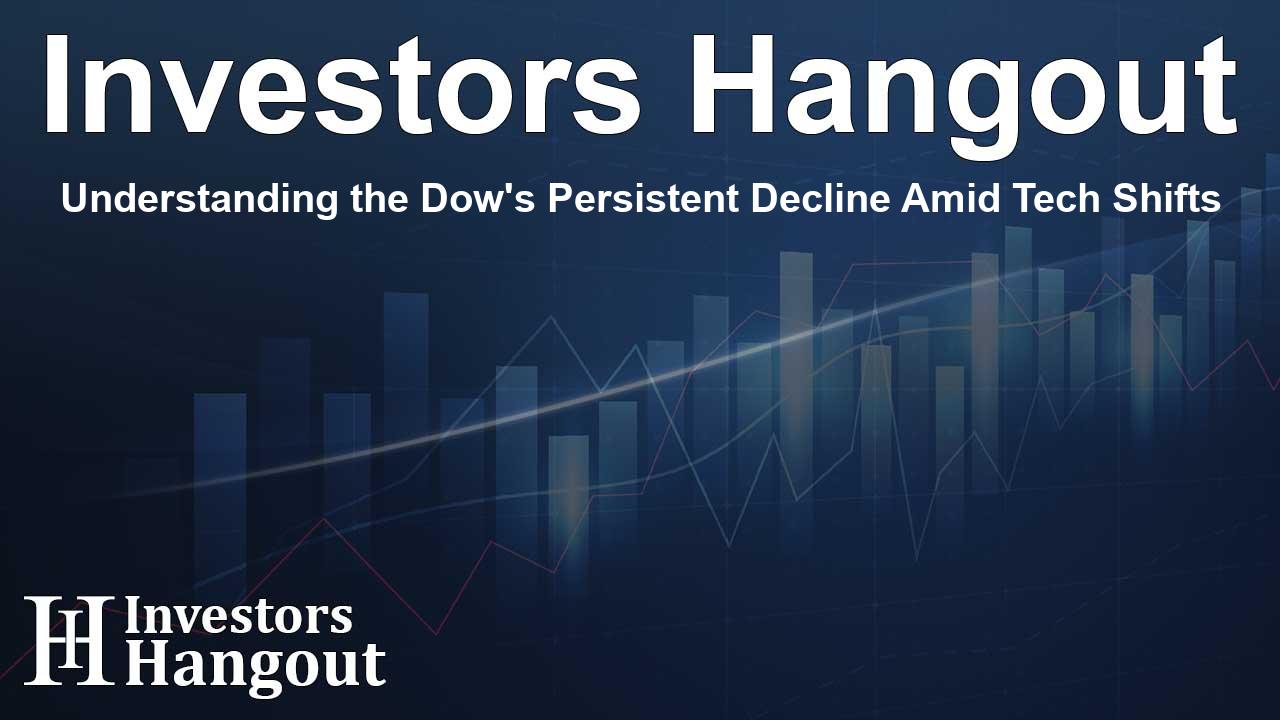Understanding the Dow's Persistent Decline Amid Tech Shifts

Dow Jones Industrial Average Faces Unique Challenges
The Dow Jones Industrial Average recently experienced a notable decline, marking its ninth consecutive day of falling numbers. This streak represents one of the longest periods of decline the index has faced in decades.
Analyzing the Current Decline
Historically, the index had not seen a similar streak of losses since February in the late 1970s. Although this recent downturn accumulated a nearly 3.47% loss, it's interesting to note that there have been 267 instances since 1900 where the index lost more than 3.47% in just a single day.
Perspectives from Market Experts
Ryan Detrick, a chief market strategist, brought attention to these figures, pointing out the contrast between the current slow decline and the more severe individual crashes experienced in the past.
Reasons Behind the Dow's Downtick
The Dow's movement is reflective of its composition as a price-weighted index based on 30 major U.S. stocks. Originally comprising 12 industrial stocks, the index has become increasingly criticized over its limited representation, particularly its underrepresentation of booming technology sectors.
The Shift to Technology
Nvidia Corp's recent transition into the Dow represents this changing landscape. After replacing Intel Corp in early November, Nvidia's inclusion highlights the growing intersection of technology stocks within traditional indexes. Despite this addition, many argue that the Dow is still not a true reflection of tech growth.
Understanding the Price-Weighted Index
The price-weighted nature of the Dow presents unique factors impacting the index. A significant rise or fall in a higher-priced stock can disproportionately influence the Dow’s value compared to changes in lower-priced stocks, leading to potential misrepresentations in market health.
Expert Insights
Market analyst Mitchell Goldberg emphasized that the DJIA may no longer align with its original purpose, arguing that its current trends signal an investor preference towards technology stocks rather than the Dow's traditional industrial basis.
Recent Performance Overview
Despite this recent drop, the Dow has managed a year-to-date gain of 15.21%. While the last month only showed a slight uptick of 0.14%, the broader trend remains positive in a longer-term outlook.
Comparative ETF Performance
The SPDR Dow Jones Industrial Average ETF Trust, a primary exchange-traded fund tracking the index, has also shown gains, reflecting a 15.51% increase year-to-date. It is essential for investors to keep a close watch on how the Dow adapts amidst changing economic landscapes.
Investor Concerns and Fed Influence
Investors are currently anticipating decisions from the Federal Reserve regarding interest rates, which adds another layer of complexity to the market's direction in the coming days. While a minor rate reduction is expected, concerns linger over the Fed's future monetary policies and their implications on trading strategies.
Conclusion on Market Fluctuations
While the current decline is noteworthy, it's crucial to recognize the resilience of the Dow. Remaining above its benchmarks since Election Day suggests a determination that may defy recent trends. Stakeholders continue to gauge how emerging technologies might shape market dynamics moving forward.
Frequently Asked Questions
What is the Dow Jones Industrial Average?
The Dow is a price-weighted index of 30 significant U.S. stocks that aims to showcase the overall market's performance.
Why has the Dow been declining recently?
The Dow's recent decline is attributed to a combination of past trends, investor sentiment favoring technology stocks, and upcoming Federal Reserve decisions.
How does a price-weighted index work?
A price-weighted index gives more influence to stocks with higher prices, meaning that their fluctuations can have a larger impact on the index's overall performance.
What role do technology stocks play in the Dow?
While traditionally industrial-focused, the inclusion of technology stocks like Nvidia reflects shifting market trends towards tech-driven growth.
What should investors consider moving forward?
Investors should stay informed about market trends, interest rate decisions, and the broader economic landscape to make informed trading choices.
About Investors Hangout
Investors Hangout is a leading online stock forum for financial discussion and learning, offering a wide range of free tools and resources. It draws in traders of all levels, who exchange market knowledge, investigate trading tactics, and keep an eye on industry developments in real time. Featuring financial articles, stock message boards, quotes, charts, company profiles, and live news updates. Through cooperative learning and a wealth of informational resources, it helps users from novices creating their first portfolios to experts honing their techniques. Join Investors Hangout today: https://investorshangout.com/
Disclaimer: The content of this article is solely for general informational purposes only; it does not represent legal, financial, or investment advice. Investors Hangout does not offer financial advice; the author is not a licensed financial advisor. Consult a qualified advisor before making any financial or investment decisions based on this article. The author's interpretation of publicly available data shapes the opinions presented here; as a result, they should not be taken as advice to purchase, sell, or hold any securities mentioned or any other investments. The author does not guarantee the accuracy, completeness, or timeliness of any material, providing it "as is." Information and market conditions may change; past performance is not indicative of future outcomes. If any of the material offered here is inaccurate, please contact us for corrections.